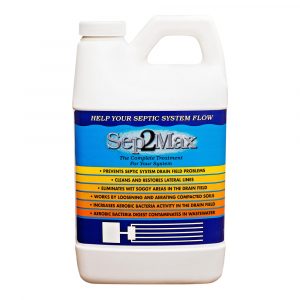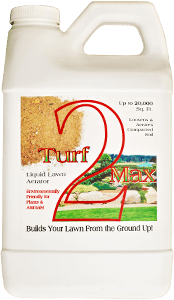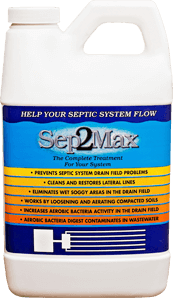Why Septic Systems Back-Up
Household products such as detergents, soaps, and shampoos contain sodium. According to the United States Department of Agriculture (USDA), sodium is the primary cause for soil compaction in clay soils. Removing sodium reduces soil compaction and improves the soil porosity (pore space). The result is improved water retention or capacity within the drain field.
When the septic tank drain field soil becomes compacted, low water retention of wastewater occurs. Eventually, the soils turn into wet, soggy mess. Left untreated, these soil problems can lead to septic leach field backup.
Sep2Max opens up clogged pore spaces and loosens and aerates the soil, thus increasing water percolation deep into the soil profile.
Sep2Max Promotes Aerobic Bacteria
Sep2Max will increase beneficial aerobic bacteria which needs oxygen to survive. Aerobic bacterial activity decreases or becomes inactive when the septic leach field soils become saturated.
After the soil is treated with Sep2Max, it loosens and becomes aerated in the septic system drain field. This process stimulates aerobic bacterial activity which is essential in treating wastewater.
The wastewater eventually percolates through the subsoil and reaches the water table. It is imperative that the aerobic bacteria in the drain field digests the contaminants in the wastewater. Hence the name reference for septic systems as “onsite sewage systems”.
Sep2Max will not negatively affect the anaerobic bacteria or enzymes within the septic tank itself.

The primary benefits of Sep2Max are:
- Prevents septic tank drain field problems
- Cleans and restores lateral lines
- Eliminates wet soggy areas in the septic drain fields
- Loosens and aerates compacted soils thereby increasing the percolation of water
- Increases aerobic bacterial activity in the drain field by improving the aeration of the soil
- Aerobic bacteria digest contaminants in wastewater
Caution: Do not use with septic systems with clay tile laterals!

